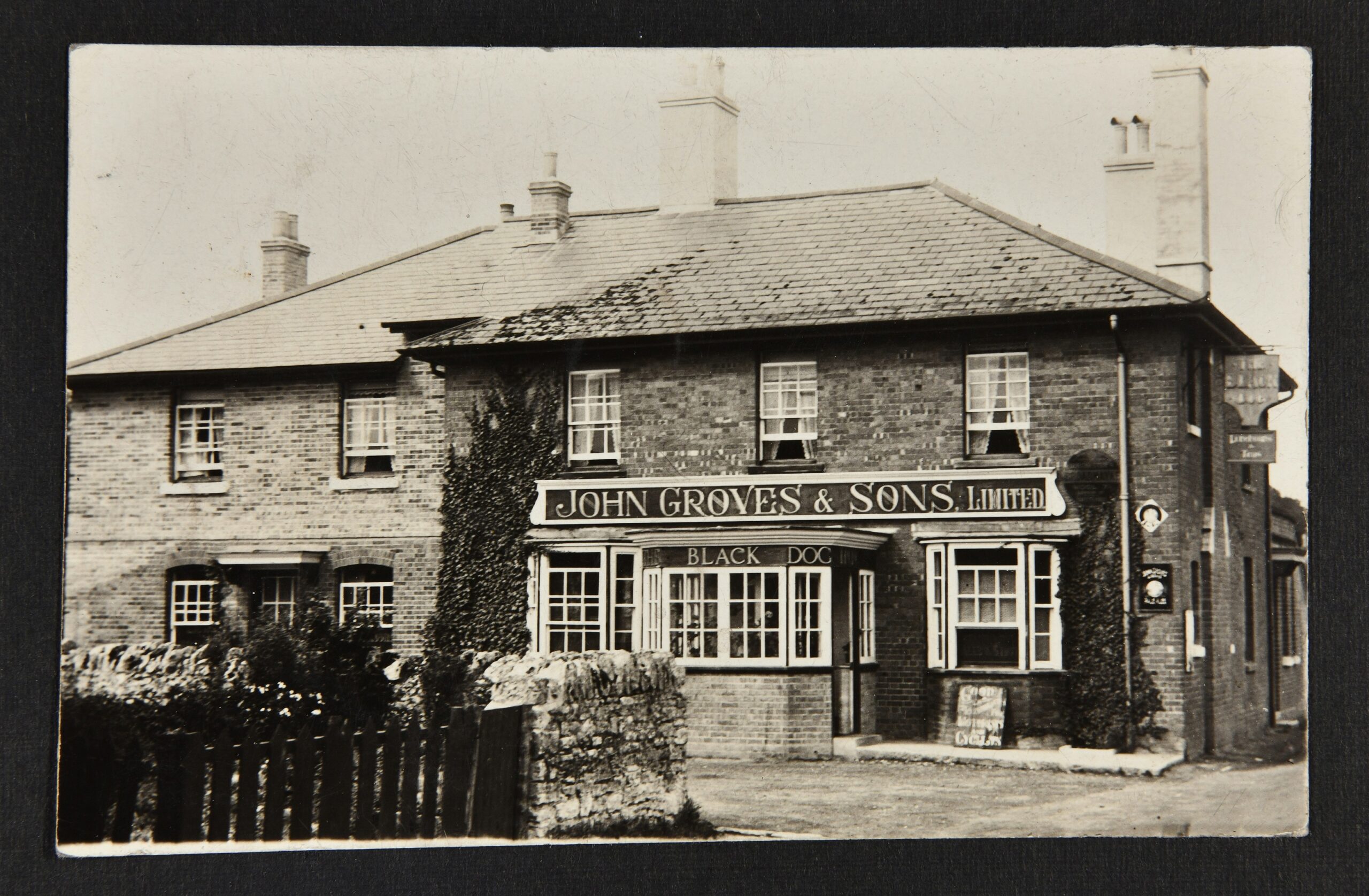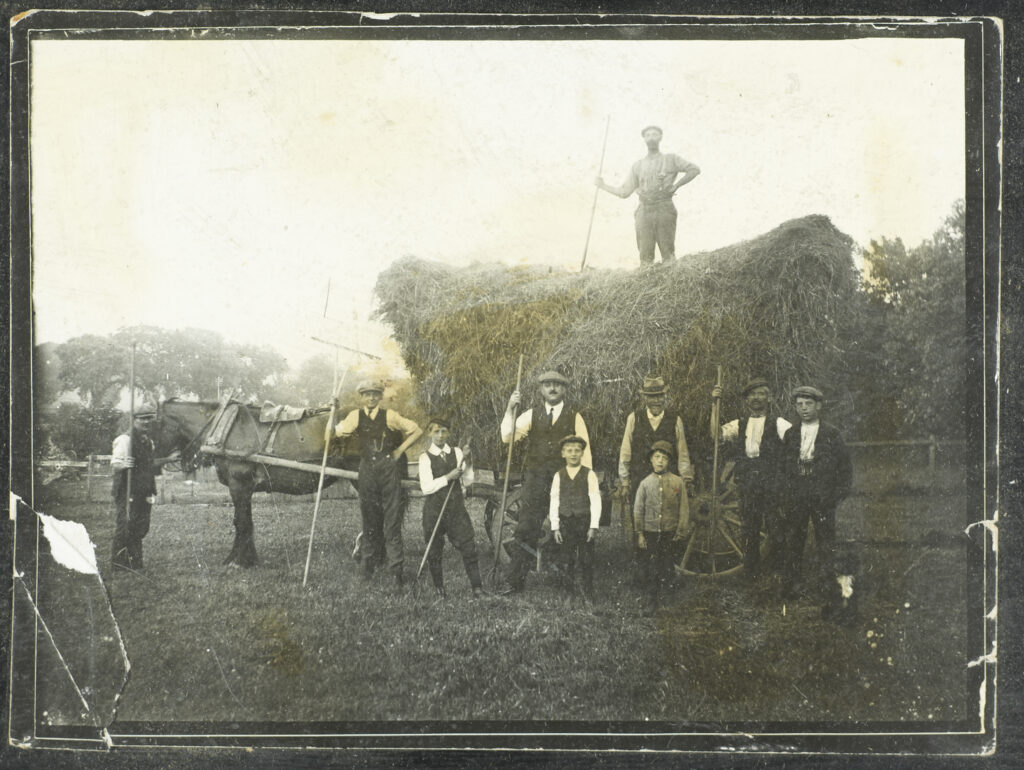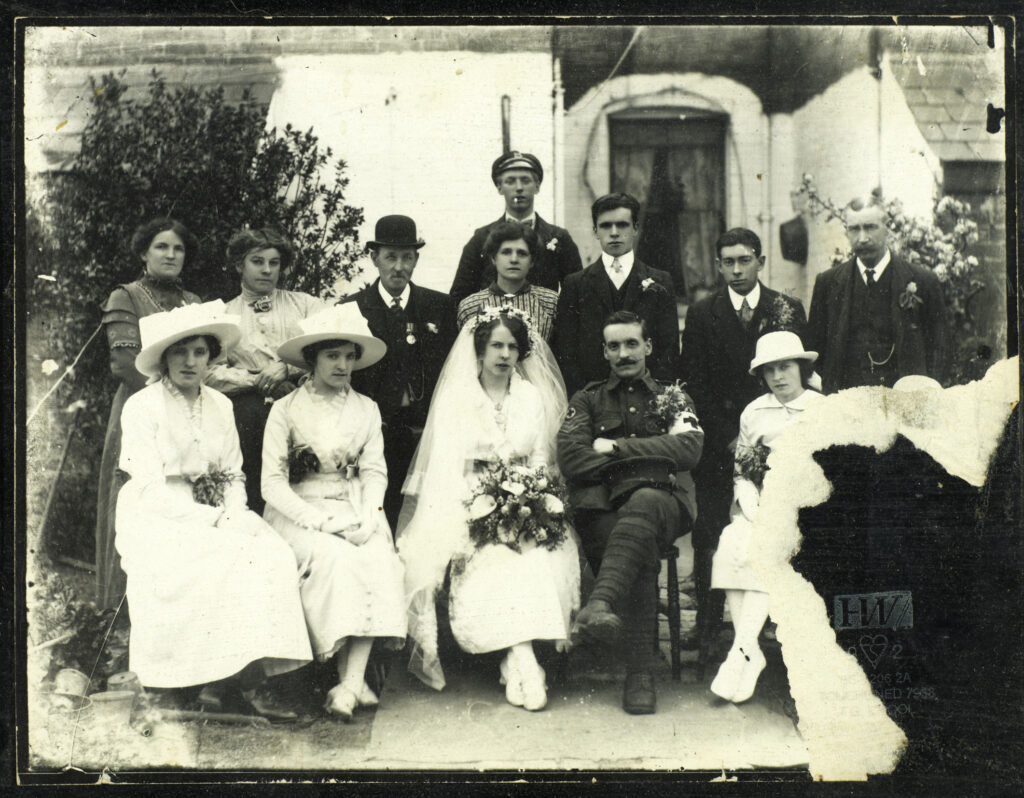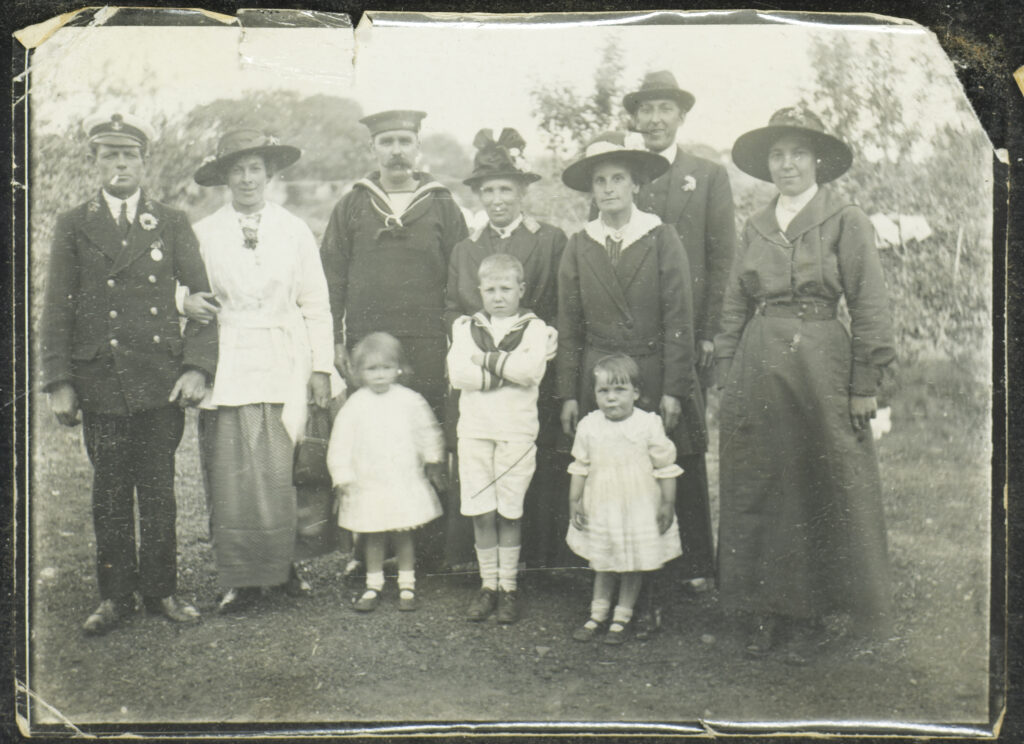If you’ve been reading the account of Frederick Keynton, early twentieth century Landlord of the Black Dog at Broadmayne, you’ll remember that his father, George, was a Foreman with GWR’s locomotive division at Weymouth, but in 1892 George Keynton changed tack.

He moved to become the Landlord of the Black Dog in Broadmayne – still a popular pub now. Evidence suggests that George continued as a responsible member of the village community- organising a ‘slate club’ and generously hosting club dinners as well as bearing witness against the thief of a blue jacket. Licenses granted show George running a bar at several events such as ‘smoking concerts’ and fairs. George suffered a stroke in 1893, and died in summer 1895, at which point his widow, Sarah, Frederick’s mother, took over the license at the Black Dog.
| Weymouth Telegram
26 November 1895 P6 C5 |
Broadmayne
The chairman reminded the members that the association had suffered a great loss by the death of Mr G E S KEYNTON, and he suggested that they should pass a vote of condolences with the widow and family…and the Hon. Sec. was requested to forward it to Mrs KEYNTON and family. |
A year after his father’s death, Frederick was in the Dorset Militia, Volunteer Artillery, Wyke detachment where his engineering background and good performance had led him to a promotion. It’s likely that Frederick was conveniently based at Nothe Fort, which was fortified with 12 muzzle loading coastal defence guns.
| Weymouth Telegram
30 May 1899 P6 C3 |
Notice to DRF Detachment.
Corpl. KEYNTON will arrange with members of this detachment for instruction on the working of the instruments during the fortnight may 29th to June 10th. Promotion – No 2555 F G KEYNTON, No 7 Company, to be corporal supernumerary to the establishment as acting instructor of DRF Detachment.
|
The 1901 census recorded Frederick George and Emily Jane living at West View, Wyke Regis. Frederick George was listed as an engineer at the Whitehead torpedo works. Also living with them was their 12-year-old adopted son Edward W FLISHER[i]

Frederick George was still a member of the Whitehead fire brigade in 1907.
In November 1908 Frederick George, listed as ‘a machinist (gunsmith)’ sailed 2nd class to New York on Board ‘SS Teutonic’. The passenger list tells us that Frederick, now aged 42, 5 ft 10 with a dark complexion, black hair and brown eyes lived at Blenheim House, Rodwell Avenue, Weymouth. He had not been to the USA before and planned to stay with a friend, Mr Service. This must have been a hugely exciting trip for Frederick, but we can’t be sure in what capacity he travelled. It’s perhaps worth noting that the RMS Teutonic was an ocean liner built for the White Star Line in Belfast and was the first armed merchant cruiser.
The 1911, 1915 and 1920 Kelly’s Directories list Frederick George at the Black Dog, Broadmayne, which Frederick’s mum had been running since her husband’s death. Frederick, Emily and Edward move around the area in the following years – they appear on electoral registers in Rodwell, Bovington and Broadmayne, but from 1913 – 1921 Frederick is listed as the Innkeeper at the Black Dog and the 1921 census recorded Frederick George as an employer working as a licensed victualler, living with his wife, mother and two servants at The Black Dog, Broadmayne. One of the servants is Edward Flisher – their adopted son. These must have been anxious times as Frederick’s brother, Arthur, was serving in the First World War, and was mentioned in dispatches.
Christmas 1925 may have been an unusually tough one as on 01 December, according to entries in The London Gazette, there was a debtor’s petition filed by Frederick although subsequent entries suggest that all debts were settled March 1926.
On 3rd September 1938 Frederick George died and was buried at Broadmayne where there is an inscribed cross. The 1939 Register recorded Emily Jane living at Redbridge, Moreton, Dorset with Edward Flisher and his second wife.
We’ve loved finding out about Frederick Keynton and his family and putting them in the context of Dorset life around the turn of the 19th Century. With connections to the GWR, Cosens Paddle-Steamers, the Dorset Militia, Devenish Brewery, the Whitehead torpedo factory and village life in Broadmayne; they seem to epitomise the Victorian and Edwardian age. But are we any nearer to understanding how such a clutch of early photographic images ended up at the Black Dog pub, Broadmayne?
In his time as Landlord, Frederick’s dad George had licenses to run fairs and gatherings in open spaces or barns – could these have been the sort of events which a photographer might have attended? Or did an army photographer work in the area during the First World War since we see so many men in uniform on the plates and photos? Or was Frederick himself, or Emily, or Edward Flisher able to take photographs which were left behind at the pub when they had all died? We may never know the full answer to these questions – but if you have any family memories, or ideas about the Black Dog and its mystery photo collection we’d love to hear from you.
Meanwhile, we have been left with the faces, clothes, postures, pets, transport, work, aeroplanes and of course weddings from more than a century ago in Broadmayne, and will be unable to resist trying to unravel their stories further with the help of DHC’s records.
—
[i] Census. England, Weymouth, Dorset. 31 March 1901. KEINTON, Frederick G (head of household) PN: 1992. F: 50. p. 48. sch: 329. www.findmypast.co.uk : accessed 21 November 2023.




